#Indian Quinine Tonic
Photo
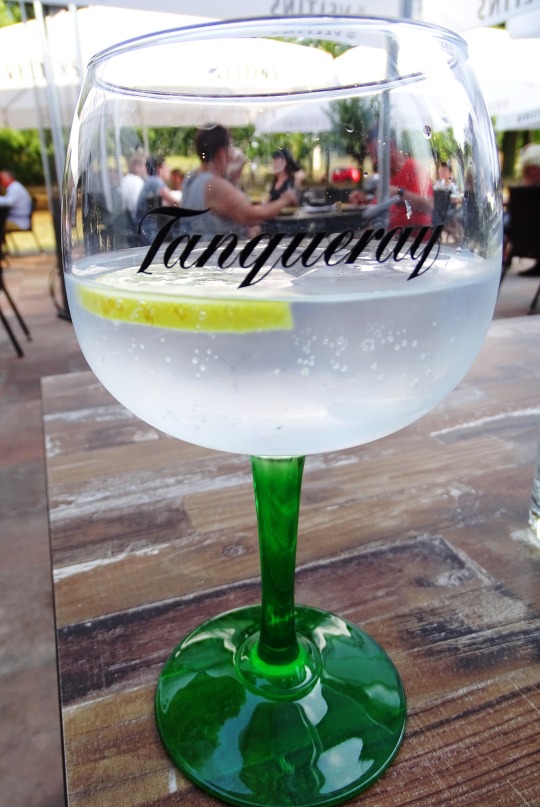

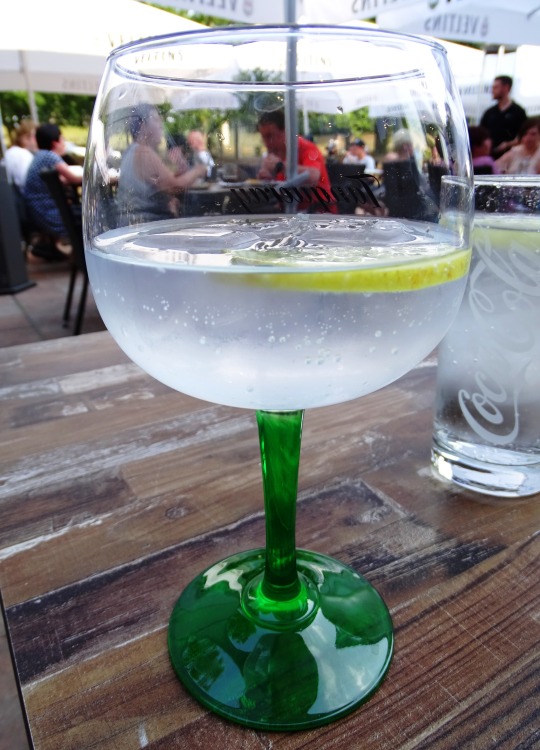


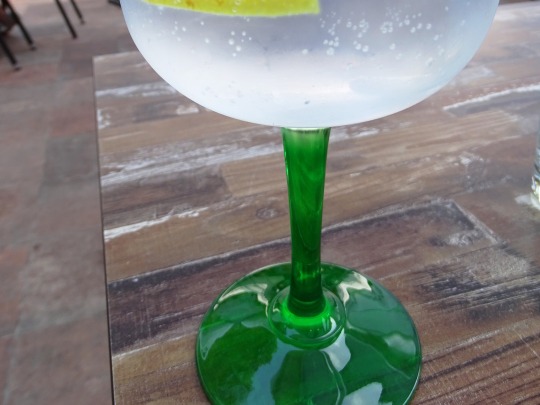
National Gin and Tonic Day
National Gin and Tonic Day is celebrated every year on April 9 to appreciate this vintage drink. Much like pancakes and maple syrup; bacon and eggs; spaghetti and meatballs; peanut butter and jelly; and apple pie and ice cream, something about G&T (gin and tonic) feels right. Alright, that’s enough dreaming about food for now!
What makes gin and tonic special is that it’s surprisingly easy to prepare yet tastes amazing. The ingredients are in the name; it doesn’t get any simpler than this, does it? G&T is the perfect daytime drink. Just kidding, it is equally perfect for nighttime too!
History of National Gin and Tonic Day
Gin has had a rollercoaster ride by falling in and out of fashion throughout the ages. Its origin is even more interesting. Gin and tonic was invented by the officers of the Presidency Armies, the Armed Forces of the East India Company operating in the Indian subcontinent. Malaria was a frequent problem for Europeans living in India and other tropical regions during this time. In the 1700s, Scottish physician George Cleghorn researched the use of quinine in the prevention of malaria. Quinine was consumed along with tonic water but had a bitter taste.
In the early 19th century, the officers of the Presidency armies in India began adding a mixture of water, sugar, lime, and good old gin to quinine to make the drink easier to go down. That’s how the famous gin and tonic cocktail was born! It was easy to make this drink as the officers were already given gin as part of their ration. Since tonic water is not used as an antimalarial medicine these days, it has lower quantities of quinine and is usually sweet and not at all bitter as it used to be.
Winston Churchill said, “Gin and tonic has saved more Englishmen’s lives, and minds, than all the doctors in the Empire.” Now, that’s some noteworthy praise. Soon, Schweppes arrived, the famous tonic water in 1783, which was aimed at the growing market of overseas Britons who had to take a daily preventative dose of quinine. Schweppes and other commercial tonics boomed in the colonies, and eventually in Britain as well. So, it appears we have malaria and the British Army in India to thank for this sweet and delicious concoction called G&T.
National Gin and Tonic Day timeline
1840s The G&T is Born
Tonic water is created after British citizens and army personnel in India mix quinine with soda, sugar, and lime.
1857 The Great Indian Mutiny
The British Crown obtains control of India after the Sepoy Mutiny, which leads to an influx of Britons and G&Ts in the subcontinent.
1870 Schweppes in the House
Schweppes introduces its “Indian Quinine Tonic” later known as “Indian tonic water.”
2010s Ginnaisance
After falling out of fashion for a while, gin and G&Ts make a comeback called the “ginnaisance.”
National Gin and Tonic Day FAQs
Why was gin nicknamed “mother’s ruin?”
People’s obsession was blamed for a lot of misery, crime, madness, death, and falling birth rates. Places that served gin let women drink alongside men for the first time and it is thought that this led women to neglect their children and turn to prostitution.
What is the ratio of gin to tonic?
You can go for three parts gin with five parts tonic water. The old school and simple one-to-two ratio is also good.
What kind of people drink G&T?
An Austrian study conducted on 953 people stated that gin and tonic drinkers tend to exhibit more signs of being psychopaths and malevolent than those who prefer other drinks.
How to keep gin and tonic fizzy?
A lot of ice cubes keep the temperature of the drink lower, which means that the carbon dioxide in the tonic finds it harder to escape, keeping the drink fizzy for a long time.
National Gin and Tonic Day Activities
Go for gin
Mix it up
Head out to your favorite bar
Just mix some gin, tonic water, lime, and ice for a nice G&T drink to cool down this summer. Whether we’re sipping on the drink by ourselves or at a party, we know it’s going to taste great!
Why stick to the same boring recipe when we can get creative? Look up some recipes and mix things up this National Gin and Tonic Day by creating an individual take on this classic drink with different flavors and colors.
Check out the nearest bars and restaurants for any exciting offers they might have on this special day. Posting a selfie with this refreshing drink is a good idea. Share its rich and colorful history too.
5 Facts About G&Ts That Will Blow Your Mind
Bathtub gin
“Fleabag” helped G&T sales
It’s an intergalactic drink
Thank Holland for gin
The Philippines loves gin
Gin was often made illegally in bathtubs by mixing cheap grain-alcohol with juniper-berry juice, which would lead to several illnesses and death.
The characters in the popular T.V. show “Fleabag” were seen drinking cans of Marks & Spencer G&T in an episode, resulting in a 24% jump in the drink’s sales.
Douglas Adams’ book “The Restaurant at the End of the Universe” suggests that the drink is known across galaxies.
Holland invented the spirit, which was popularized by the English, who were introduced to it in the 17th century.
With almost 43% of the world’s total consumption, the Philippines is the largest consumer of gin.
Why We Love National Gin and Tonic Day
It tastes great
There are many ways to make it
It’s easy to make
We all know that there’s no such thing as just one glass of G&T. Thanks to the drink’s delicious and irresistible taste, we just can’t stop having it!
Although a G&T is usually made up of just a few ingredients, we can still tweak the recipe to our liking by adjusting the amount of tonic water. We can also alter the quantity of lime juice, add different flavors, and get creative.
What other cocktail has all its ingredients listed in its name? G&T is arguably the easiest drink to make; all we need is gin, tonic water, lime juice, and some ice cubes. There’s no way to go wrong, even a child could do it! Wait, forget that last part.
Source
#National Gin and Tonic Day#don't drink and drive#cocktail#travel#vacation#original photography#restaurant#lemon#ice cube#summer 2022#Germany#Spain#USA#2017#2021#national day#9 April#G&T#NationalGinAndTonicDay#Indian Quinine Tonic#Schweppes
3 notes
·
View notes
Text
In the 19th century, British colonists faced several challenges in India, [...] [including] malaria. [...] The imperialists needed an answer to the problem and they found it in quinine. [...] [T]he British promptly embraced quinine, consuming tonnes of it every year by the mid-1800s. [...] Quinine was so bitter that soldiers and officials began mixing the powder with soda and sugar, unwittingly giving birth to “tonic water”. [...] [I]t prompted Winston Churchill to once proclaim, “The gin and tonic has saved more Englishmen’s lives, and minds, than all the doctors in the Empire.” [...] If by some good fortune malaria did not claim them, plague, cholera, dysentery, enteric fever, hepatitis or the unforgiving sun could. Preserving and protecting the body was [...] crucial to the success of the colonial project. As historian EM Collingham aptly summarised in her study, “The British experience of India was intensely physical.”
One way the colonists tried to deal with this challenge was through food and drinks. “The association between food and the maintenance of health was a concern of Anglo-Indian doctors, dieticians and the British authorities throughout the duration of colonial rule [...],” writes Sam Goodman in Unpalatable Truths: Food and Drink as Medicine in Colonial British India. [...]
---
The Medical Gazette, for instance, recommended treating dysentery with a “low diet” comprising thin chicken soup [...]. Botanist-physician George Watt too extolled the virtues of sago. In A Dictionary of the Economic Products of India (1893), he wrote that sago is “easily digestible and wholly destitute of irritating properties” and in demand [...]. For fever, weakness and sundry ailments, beef tea [...] was considered an ideal remedy. And for cholera, The Seamen’s New Medical Guide (1842) prescribed brandy during the worst of the sickness and half a tumbler of mulled wine with toasted bread and castor oil [...]. Ship masters and pantrymen would stock their vessels with foods with known medicinal benefits such as sago, arrowroot, lime juice, desiccated milk and condensed milk (the iconic Anglo Swiss Condensed Milk tins, later known as Milkmaid, enjoyed a permanent spot on British ships).
---
Businessmen too recognised the precarity of life abroad and realised that therein lay a perfect commercial opportunity. By the 19th century, numerous companies had cropped up across Europe, including in England, that would sell food in hermetically sealed tin containers.
One of these was Messrs Brand & Co. Recommended highly in Culinary Jottings for Madras by Colonel Robert Kenney-Herbert, Messrs Brand & Co had several offerings [...]: essence of beef, concentrated beef tea, beef tea jelly, meat lozenges, [...] potted meat, York and game pie, and A1 sauce [...]. Another company, John Moir & Sons, focused mostly on canned soups [...], selling oxtail, turtle, giblet and hare.
---
By the late 19th century such was the popularity of canned foods that rare would be the pantry in a colonial home that didn’t store them along with medical provisions like opium, quinine, chlorodyne and Fowler’s solution (an arsenic compound). [...] As Flora Steele and Grace Gardiner wrote in The Complete Indian Housekeeper and Cook, “A good mistress will remember the breadwinner requires blood-forming nourishment, and the children whose constitutions are being built up day by day, sickly or healthy, according to the food given them; and bear in mind the fact that in India, especially, half the comfort of life depends on clean, wholesome, digestible food.”
To assist the British woman in this ostensible duty, there were a number of cookbooks and housekeeping manuals [...]. The Englishwoman in India, for instance, published in 1864 under the pseudonym A Lady Resident, had a whole section with recipes for “infants and invalids”. These included carrot pap cooked into a congee with arrowroot [...] and toast water (well-toasted bread soaked in water). Steele and Gardiner too had a few recipe recommendations [...], including champagne jelly (“most useful in excessive vomiting”) and the dangerous-sounding Cannibal Broth (beef essence), which they said should be consumed with cream [...] to treat extreme debility and typhoid. [...]
---
One dish born of this encounter was the pish pash. The pish pash is considered an invention of the colonial cook, who adapted the kedgeree – the colonial cousin of khichdi – into a light nursery food. The famous Hobson-Jobson defined it as “a slop of rice soup with small pieces of meat” [...]. None other than Warren Hastings, the first governor-general of Bengal, gave confirmation of its efficacy when in 1784 he wrote to his wife from the sick bed [...]. There are enough records to show that the imperialists counted marh (starch water from cooked rice) and bael (wood apple) sherbet among their go-to remedies and benefited from the medicinal qualities of chiretta water and ajwain-infused water.
---
Text by: Priyadarshini Chatterjee. “How food came to the rescue of the British in India.” Scroll.in (Magazine format). 26 April 2023. [Bold emphasis and some paragraph breaks/contractions added by me.]
106 notes
·
View notes
Text
Tonic Water Market Will Hit Big Revenues In Future | Biggest Opportunity Of 2023
Latest business intelligence report released on Global Tonic Water Market, covers different industry elements and growth inclinations that helps in predicting market forecast. The report allows complete assessment of current and future scenario scaling top to bottom investigation about the market size, % share of key and emerging segment, major development, and technological advancements. Also, the statistical survey elaborates detailed commentary on changing market dynamics that includes market growth drivers, roadblocks and challenges, future opportunities, and influencing trends to better understand Tonic Water market outlook.
List of Key Players Profiled in the study includes market overview, business strategies, financials, Development activities, Market Share and SWOT analysis are:
Fever Tree (United Kingdom)
Dr Pepper Snapple Group (United States)
PepsiCo, Inc. (United States) (SodaStream International Ltd.)
Fentimans (United Kingdom)
The Coca-Cola Company (United States)
White Rock Beverages Inc. (United States)
Diageo plc (United Kingdom)
Monster Beverage Corporation (United States)
Bermondsey Tonic Water (United Kingdom)
Bradleys Tonic Co. (United States)
Tonic water (Indian tonic water) is a carbonated drink which contains quinine as a major ingredient. Tonic water has been originally used as a prophylactic against malaria, now has a meaningfully lower quinine content. It is consumed for its unique bitter flavor. It is frequently used in mixed drinks, mainly in gin & vodka-based alcoholic drinks. It is often consumed with regular content or combined with alcohol or fruit juice. Traditional tonic water comprises added sugar, while diet tonic water
contains artificial sweeteners. Diet tonic water holds very less calories. It can be consumed as a mixer with alcoholic drinks or for the crisp flavour and bubbles. The main benefit is to offer rehydration from drinking water. Various types of tonic water is available in the market including regular tonic water, diet tonic water, herb/essential oil-infused tonic water, as well as flavored tonic water and others. Growing inclination towards direct consumption of tonic water and increasing disposable income of people with industrialization & economic growth are the driving factors for the growth of global tonic water market.
Key Market Trends: The growing consumption of gin around the globe
Opportunities: Growing Opportunities in Emerging Markets
Increasing product launches by key players in the market
Market Growth Drivers: Growing inclination towards direct consumption of tonic water
Increasing disposable income of people with industrialization & economic growth
Rising popularity of social media & the internet boosting the demand for tonic water
The Global Tonic Water Market segments and Market Data Break Down 29181
Presented By
AMA Research & Media LLP
0 notes
Text
Tonic Water Market is set to Fly High Growth in Years to Come
The Latest Released market study on Global Tonic Water market provides information and useful stats on market structure, size and trends. The report is intended to provide cutting-edge market intelligence and strategic insights to help decision makers take sound investment decisions and identify potential gaps and growth opportunities. Besides, the report also identifies and analyses changing dynamics, emerging trends along with essential drivers, challenges, opportunities and restraints in Tonic Water market.
What’s keeping Fever Tree (United Kingdom),Dr Pepper Snapple Group (United States),PepsiCo, Inc. (United States) (SodaStrea,m International Ltd.),Fentimans (United Kingdom),The Coca-Cola Company (United States),White Rock Beverages Inc. (United States),Diageo plc (United Kingdom),Monster Beverage Corporation (United States),Bermondsey Tonic Water (United Kingdom),Bradleys Tonic Co. (United States),Keep Growing in the Market? Benchmark yourself with the strategic moves and latest Market Share and Sizing of Global Tonic Water market recently published by AMA
Tonic water (Indian tonic water) is a carbonated drink which contains quinine as a major ingredient. Tonic water has been originally used as a prophylactic against malaria, now has a meaningfully lower quinine content. It is consumed for its unique bitter flavor. It is frequently used in mixed drinks, mainly in gin & vodka-based alcoholic drinks. It is often consumed with regular content or combined with alcohol or fruit juice. Traditional tonic water comprises added sugar, while diet tonic water contains artificial sweeteners. Diet tonic water holds very less calories. It can be consumed as a mixer with alcoholic drinks or for the crisp flavour and bubbles. The main benefit is to offer rehydration from drinking water. Various types of tonic water is available in the market including regular tonic water, diet tonic water, herb/essential oil-infused tonic water, as well as flavored tonic water and others. Growing inclination towards direct consumption of tonic water and increasing disposable income of people with industrialization & economic growth are the driving factors for the growth of global tonic water market.
The Tonic Water Market segments and Market Data Break Down by Type (Regular Tonic Water, Diet Tonic Water, Herb/Essential Oil-Infused Tonic Water, Flavored Tonic Water, Others), Application (Alcoholic Drinks (gin and others), Direct Consumption), Distribution Channel (Supermarkets/Hypermarkets, Convenience stores, Online Retailers, Bar and Nightclubs, Others), End User (Men, Women)
On the geographical front, the market has been segregated into North America (the United States and Canada), Europe (Germany, France, the United Kingdom, Italy, Spain, Russia and others), Asia Pacific (China, Japan, India, South Korea, Australia, Indonesia and others), Latin America (Brazil, Mexico and others), and Middle East and Africa.
What’s Trending in Market: The growing consumption of gin around the globe
Market Opportunities: Growing Opportunities in Emerging Markets
Increasing product launches by key players in the market
Highlights of Influencing Drivers: Growing inclination towards direct consumption of tonic water
Increasing disposable income of people with industrialization & economic growth
Rising popularity of social media & the internet boosting the demand for tonic water
Presented By
AMA Research & Media LLP
0 notes
Photo

Soda had become a popular beverage in London by the early 1800s. Companies such as Schweppes sold plain carbonated water, advertising it as a health elixir. Other firms experimented with flavoured variants such as lemon, orange, and raspberry. Inevitably, soda found its way from the heart of the empire to India, where it was a luxury item for Britons in the subcontinent. In 1837, Henry Rogers, a chemist in Mumbai, set up what was likely western India's first "aerated water" factory. Rogers' product was not simply a refreshing pick-me-up. Before Mumbai completed its modern waterworks in the late 19th Century, it relied on well water, which was filthy and potentially deadly. In the best of times, residents complained of drinking muddy liquid that was "very foul both to sight and smell, of a yellowish brown colour". In the worst of times, hundreds died from cholera outbreaks. Drinking carbonated water could be a life-saving habit. After all, carbonic acid in soda killed bacteria and viruses. This was even more the case after the invention of carbonated tonic water in 1858, which contained quinine to ward off malaria. Parsis sensed a commercial opportunity in the new fizzy drinks consumed by their colonial masters. Many were already involved in businesses that catered to Britons, as commissaries to the army or owners of hotels and "Europe shops" in cities. They added soda to their inventories. According to community lore, the first Parsi to settle in Ahmednagar - a dusty army outpost in the Deccan - arrived in town with a soda-making apparatus strapped to a mule, with which he slaked the thirst of British soldiers. By the mid-1800s, Parsis began imbibing the strange drink themselves. Here, they served as trendsetters for other Indians, who had looked at soda with suspicion. Source: Patel, D., BBC #sodabottle #palonjisoda #raspberrysoda #iranicafe #parsieatery #mumbaidiaries (at Jimmy Boy) https://www.instagram.com/p/CpXo_e_PnoY/?igshid=NGJjMDIxMWI=
0 notes
Photo
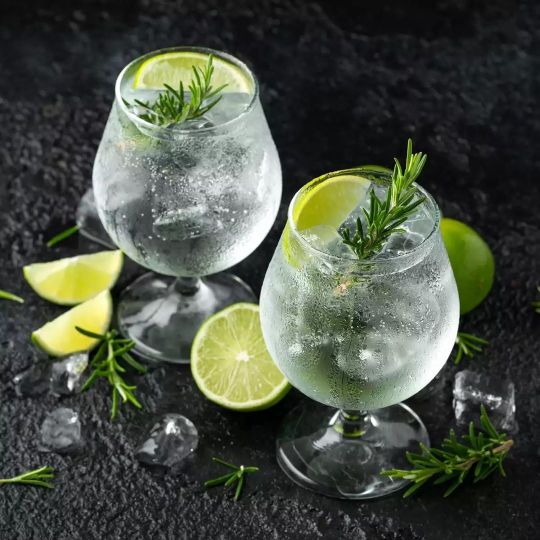
Happy International Gin & Tonic Day! The cocktail was created by officers of the Presidency armies, the military force of the East India Company which operated on the Indian subcontinent. In the India subcontinent and other tropical regions, malaria was a persistent problem for Europeans, and in the 18th century, Scottish doctor George Cleghorn studied how quinine, a traditional cure for malaria, could be used to prevent the disease. The quinine was drunk in tonic water but the bitter taste was unpleasant. Presidency armies officers in India in the early 19th century took to adding a mixture of water, sugar, lime and gin to the quinine in order to make the drink more palatable, and thus the gin and tonic cocktail was born. 🗺 #InternationalGinAndTonicDay #FoodConsultant #Food #FoodService #FoodServiceSolutions #FoodSales #FoodDude #WeKnowFood #FoodOfTheDay #NobertSales @NobertSales #InternationalDrinkOfTheDay (at Germantown, Tennessee) https://www.instagram.com/p/Cj5e2bDr0kK/?igshid=NGJjMDIxMWI=
#internationalginandtonicday#foodconsultant#food#foodservice#foodservicesolutions#foodsales#fooddude#weknowfood#foodoftheday#nobertsales#internationaldrinkoftheday
0 notes
Text
Gin Tonic
8 novembre 2020
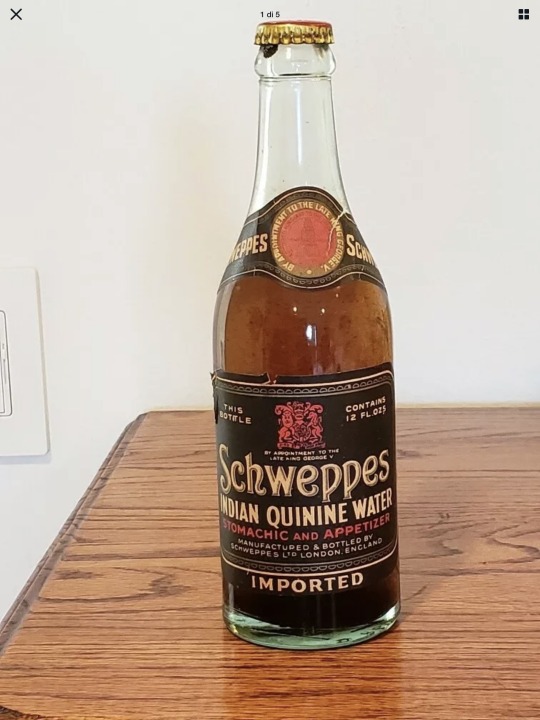
Hemingway racconta che tutto sia avvenuto al bar di Perico Chicote a Madrid durante l’assedio della città durante la Guerra Civile.
Il bar è sulla Gran Via di Madrid e durante la Guerra Civile è stato il ritrovo di giornalisti, membri delle brigate internazionali, ufficiali russi, scrittori. In quei giorni difficili lo frequentarono Andrè Malreaux, Rafael e Teresa…
View On WordPress
0 notes
Text
Hot take, but lacroix really isn’t that bad. You know what is bad?
Schweppes Indian Tonic. Made by sadists for masochists. It’s tonic water (which is already bitter AF thanks to quinine) flavored with lemon and orange oils. In short some psychopath took tonic water and squished citrus (tastes like the peels) into it. Two things that shouldn’t coexist. Ever.
#sheep.txt#y’all wanna talk about liquid violence#here it is#lacroix#schweppes#indian tonic#drinks#idk food?
20 notes
·
View notes
Photo
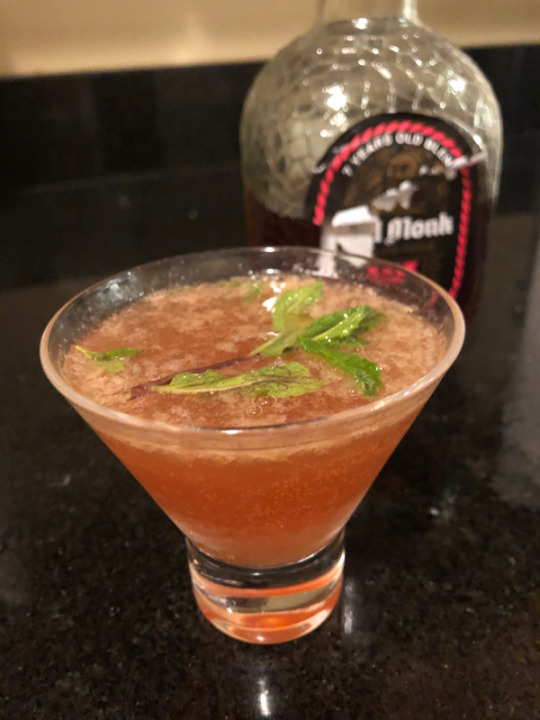
THE OLD DESI
by Réginald-Jérôme de Mans
A friend (why not? To paraphrase Rjmbaud, Réginald-Jérôme de Mans est un autre) writes: “Live to be a hundred, I’ll never forget it. In a cheesy import superstore, there it stood in all ridiculousness among the rattan furniture and foreign candy: Omar Khayyam Champagne. Yes, Omar the Tentmaker, who wrote the Rubaiyat a millennium ago, who now found his name on sparkling wine instead of sparkling verse. Nor, pedants, did the wine come from the Champagne region of France… or indeed from Khayyam’s native Khorasan province, Persia. Instead, small type on the label indicated the wine was a product of Maharashtra. Maharashtra, India, 1500 miles away and two countries away from where Khayyam lived and died, Maharashtra, the place my mother hailed from, and yet no other famous personage from anywhere closer had come to mind. Tentmaker in life, winemaker in death. Of Indian champagne.”
India is a large enough place to host the right pockets of soil and climate to make decent wine, even though neither my friend nor I dared buy Omar’s bubbly. I’ve looked for it in recent years hoping to make up for decades of curiosity without finding it again. South Asia is better known for its scotch: dutiful scion of empire, India is the world’s largest whisky market and produces almost half of all the whisky in the world, tending usually to suave blends, while Pakistan itself hosts a reputable single malt distillery. However, a trip to my liquor store a few years ago turned up another surprise: a squat bottle whose crude-looking label announced itself to be Old Monk rum, India’s favorite export.
Sentimental favorite though it be, this is rather far from the sophisticated sippers of Haiti, Venezuela and Nicaragua found in nice duty-frees (alongside vintage wines that may have passed through the kitchen of the dearly deported Rudy Kurniawan. It tastes warm, sweet, and distinctly of vanilla. Who is the monk and why is he venerable? Accounts aren’t clear, although the brand suggests it was inspired by the distillate contentment of. Benedictine monks. The rum itself is not particularly old, having been introduced in the 1960s by a distillery founded by the father of one of the worst colonial murderers of the British Raj. Colonial history is usually a mixture of such superficial twee charm overlaying enraging bloodshed.
We can thank colonialism for many of our favorite cocktails, including the simple gin and tonic, intended to sling antimalarial quinine and scurvy-fighting limes to the tippler. Various more complex recipes rely on such literal fruits of the tropics as limes, sugarcane distillates like rum, and the mysterious potions of native herbs known as bitters, leavened with products of the colonial power, the myth of civilizing colonialism in microcosm. Such is the case of the Old Cuban, a complicated standby of such outposts of tradition as the Carlyle Hotel’s Bemelmans bar. Faith Middleton’s recipe evokes the South American travels of Ludwig Bemelmans himself to draw a connection to distinguished cultural lush and Cuban resident Ernest Hemingway, America’s would-be avatar who makes those hot-country connections safe, sanitized by a bit of Old World-champagne.
His noted love of cats aside, I tend to agree with Gore Vidal on Hemingway (“What other culture could have produced someone like Hemingway and not seen the joke?”). Anyway, Papa didn’t ask to be dragooned into this particular drink recipe, so I’ve made it my own without the buffer of a familiar credentialed intermediator, using Old Monk, the mint that grows wild in warm climates, and considerably more tropical bitters to cut the sweetness. And rather than the Canard-Duchêne champagne that imparts Old World élan, I’d love to be able to use that lost misnomer Omar Khayyam. In his absence, the insecurities of my reflexive postcolonial Europhilia drive me to use pink champagne, ideally Billecart-Salmon Rosé, although Mumm Cuvée Napa Brut Rosé pink sparkling wine works just as well. I’ve dubbed my riff on the recipe the Old Desi, not for late old Cuban-American Desi Arnaz, but in honor of my friend’s invisible countrymen, the Indian desis behind the portrait of the European old monk on the bottle and Omar Khayyam’s Marathi grapes.
The Old Desi, a bastard cocktail by Réginald-Jérôme de Mans:
2 oz Old Monk Indian rum
2 oz fresh lime juice
½ oz simple syrup, which you can make dissolving one part confectioner’s sugar in one part hot water
Liberal and repeated slugs of Angostura bitters
Fresh mint sprigs
Splash Billecart-Salmon Rosé pink champagne
Add the simple syrup to a shaker (if making your own, you can dissolve it together now), followed by the lime juice and a generously leafy mint sprig. Muddle gently. Fill with ice. Add the rum, then repeatedly have at the concoction with the bitters. Shake vigorously. Strain into a martini glass until ¾ full. Top with the champagne. Garnish with a mint sprig. Sip thoughtfully and wonder at what made thee.
7 notes
·
View notes
Text
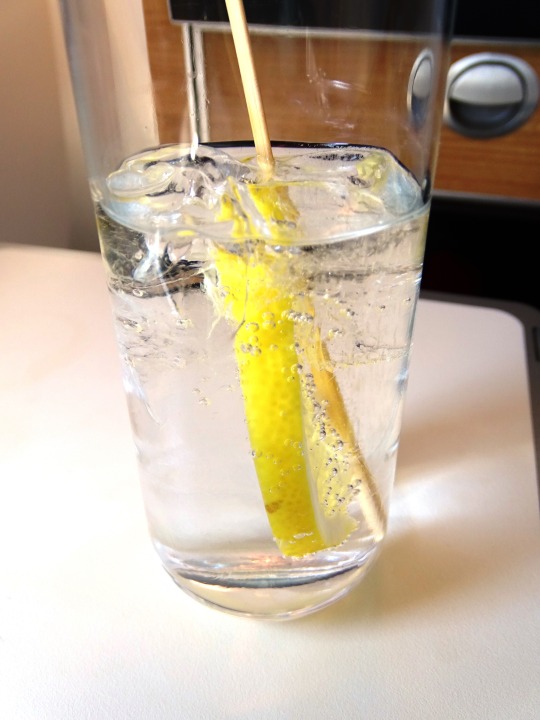


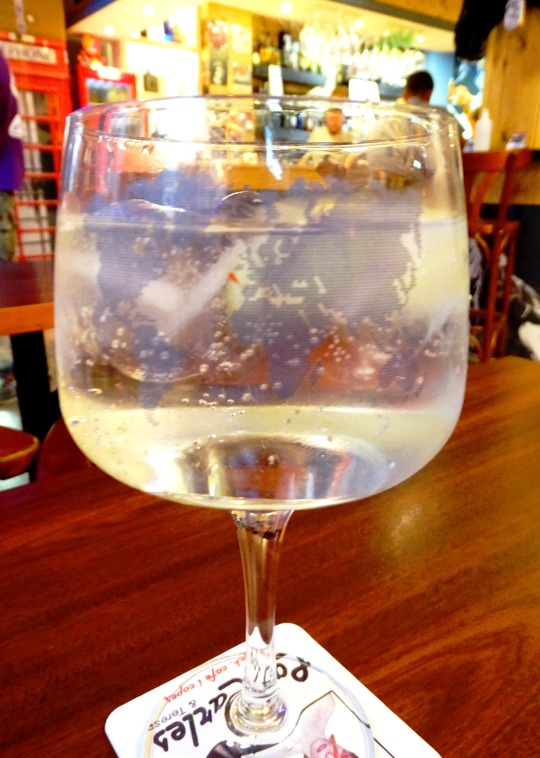
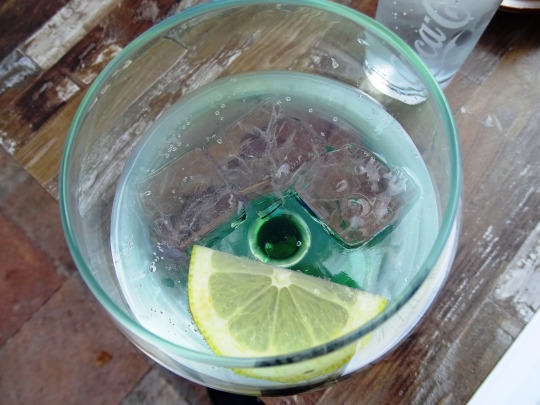
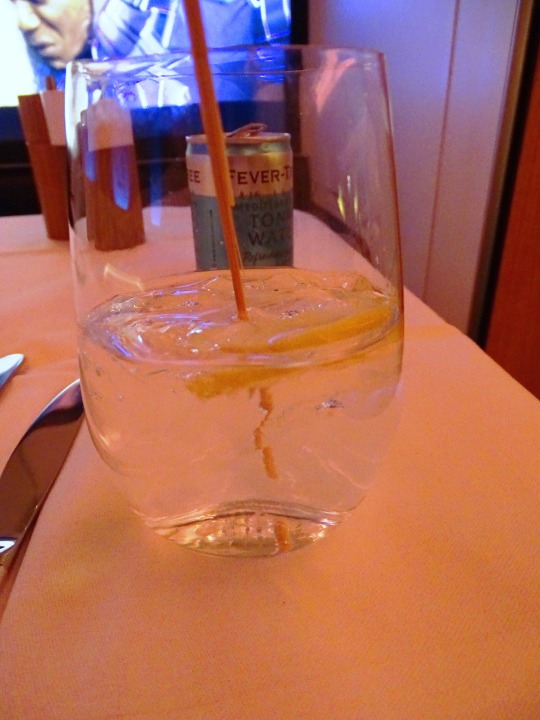
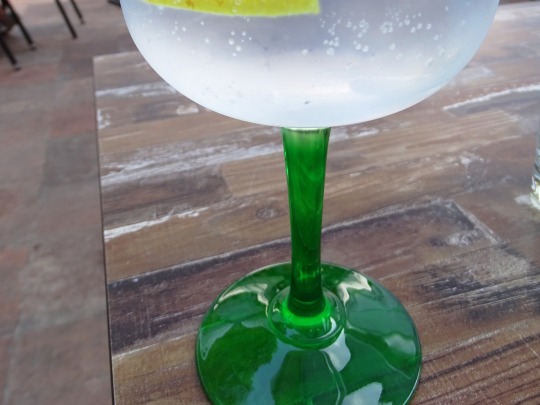

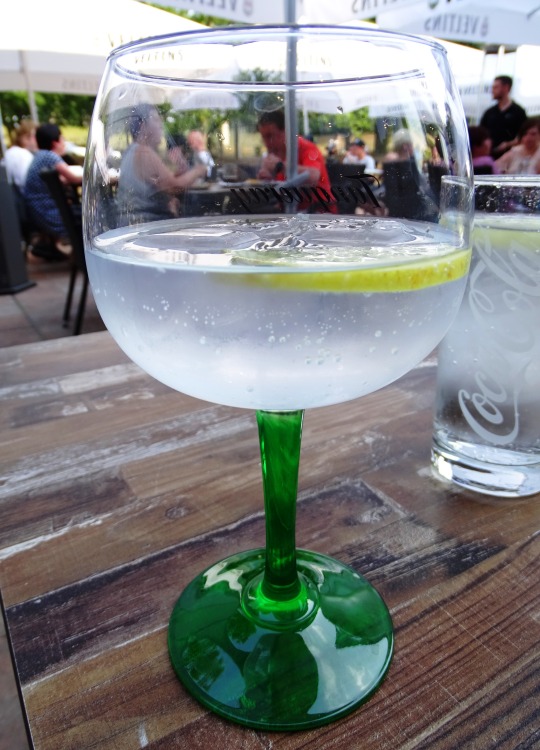
National Gin and Tonic Day
National Gin and Tonic Day is celebrated every year on April 9 to appreciate this vintage drink. Much like pancakes and maple syrup; bacon and eggs; spaghetti and meatballs; peanut butter and jelly; and apple pie and ice cream, something about G&T (gin and tonic) feels right. Alright, that’s enough dreaming about food for now!
What makes gin and tonic special is that it’s surprisingly easy to prepare yet tastes amazing. The ingredients are in the name; it doesn’t get any simpler than this, does it? G&T is the perfect daytime drink. Just kidding, it is equally perfect for nighttime too!
History of National Gin and Tonic Day
Gin has had a rollercoaster ride by falling in and out of fashion throughout the ages. Its origin is even more interesting. Gin and tonic was invented by the officers of the Presidency Armies, the Armed Forces of the East India Company operating in the Indian subcontinent. Malaria was a frequent problem for Europeans living in India and other tropical regions during this time. In the 1700s, Scottish physician George Cleghorn researched the use of quinine in the prevention of malaria. Quinine was consumed along with tonic water but had a bitter taste.
In the early 19th century, the officers of the Presidency armies in India began adding a mixture of water, sugar, lime, and good old gin to quinine to make the drink easier to go down. That’s how the famous gin and tonic cocktail was born! It was easy to make this drink as the officers were already given gin as part of their ration. Since tonic water is not used as an antimalarial medicine these days, it has lower quantities of quinine and is usually sweet and not at all bitter as it used to be.
Winston Churchill said, “Gin and tonic has saved more Englishmen’s lives, and minds, than all the doctors in the Empire.” Now, that’s some noteworthy praise. Soon, Schweppes arrived, the famous tonic water in 1783, which was aimed at the growing market of overseas Britons who had to take a daily preventative dose of quinine. Schweppes and other commercial tonics boomed in the colonies, and eventually in Britain as well. So, it appears we have malaria and the British Army in India to thank for this sweet and delicious concoction called G&T.
National Gin and Tonic Day timeline
1840s The G&T is Born
Tonic water is created after British citizens and army personnel in India mix quinine with soda, sugar, and lime.
1857 The Great Indian Mutiny
The British Crown obtains control of India after the Sepoy Mutiny, which leads to an influx of Britons and G&Ts in the subcontinent.
1870 Schweppes in the House
Schweppes introduces its “Indian Quinine Tonic” later known as “Indian tonic water.”
2010s Ginnaisance
After falling out of fashion for a while, gin and G&Ts make a comeback called the “ginnaisance.”
National Gin and Tonic Day FAQs
Why was gin nicknamed “mother’s ruin?”
People’s obsession was blamed for a lot of misery, crime, madness, death, and falling birth rates. Places that served gin let women drink alongside men for the first time and it is thought that this led women to neglect their children and turn to prostitution.
What is the ratio of gin to tonic?
You can go for three parts gin with five parts tonic water. The old school and simple one-to-two ratio is also good.
What kind of people drink G&T?
An Austrian study conducted on 953 people stated that gin and tonic drinkers tend to exhibit more signs of being psychopaths and malevolent than those who prefer other drinks.
How to keep gin and tonic fizzy?
A lot of ice cubes keep the temperature of the drink lower, which means that the carbon dioxide in the tonic finds it harder to escape, keeping the drink fizzy for a long time.
National Gin and Tonic Day Activities
Go for gin
Mix it up
Head out to your favorite bar
Just mix some gin, tonic water, lime, and ice for a nice G&T drink to cool down this summer. Whether we’re sipping on the drink by ourselves or at a party, we know it’s going to taste great!
Why stick to the same boring recipe when we can get creative? Look up some recipes and mix things up this National Gin and Tonic Day by creating an individual take on this classic drink with different flavors and colors.
Check out the nearest bars and restaurants for any exciting offers they might have on this special day. Posting a selfie with this refreshing drink is a good idea. Share its rich and colorful history too.
5 Facts About G&Ts That Will Blow Your Mind
Bathtub gin
“Fleabag” helped G&T sales
It’s an intergalactic drink
Thank Holland for gin
The Philippines loves gin
Gin was often made illegally in bathtubs by mixing cheap grain-alcohol with juniper-berry juice, which would lead to several illnesses and death.
The characters in the popular T.V. show “Fleabag” were seen drinking cans of Marks & Spencer G&T in an episode, resulting in a 24% jump in the drink’s sales.
Douglas Adams’ book “The Restaurant at the End of the Universe” suggests that the drink is known across galaxies.
Holland invented the spirit, which was popularized by the English, who were introduced to it in the 17th century.
With almost 43% of the world’s total consumption, the Philippines is the largest consumer of gin.
Why We Love National Gin and Tonic Day
It tastes great
There are many ways to make it
It’s easy to make
We all know that there’s no such thing as just one glass of G&T. Thanks to the drink’s delicious and irresistible taste, we just can’t stop having it!
Although a G&T is usually made up of just a few ingredients, we can still tweak the recipe to our liking by adjusting the amount of tonic water. We can also alter the quantity of lime juice, add different flavors, and get creative.
What other cocktail has all its ingredients listed in its name? G&T is arguably the easiest drink to make; all we need is gin, tonic water, lime juice, and some ice cubes. There’s no way to go wrong, even a child could do it! Wait, forget that last part.
Source
#National Gin and Tonic Day#don't drink and drive#cocktail#travel#vacation#original photography#restaurant#lemon#ice cube#summer 2022#Germany#Spain#USA#2017#2021#national day#9 April#G&T#NationalGinAndTonicDay#Indian Quinine Tonic#Schweppes#2023
0 notes
Photo

Better bitter…
Tonic water (or Indian tonic water) is a carbonated soft drink, in which quinine is dissolved. Originally used as a prophylactic against malaria, tonic water usually now has a significantly lower quinine content and is consumed for its distinctive bitter flavor. It is often used in mixed drinks, particularly in the “gin and tonic”.
Since 2005, premium tonic water brands have increased in the marketplace, such as Fever Tree and Q Tonic. These brands place emphasis on using real quinine and natural sweeteners, as opposed to quinine flavoring and high fructose corn syrup. These brands often sell at a premium price. Since 2010, at least four tonic syrups have been released in the US. Consumers add carbonated water to the syrup to make tonic water; this allows drinkers to vary the intensity of the flavor.
Keep some on-hand as you never know when one of your guests will ask for it. And you didn’t hear from me, but many doctors recommend quinine as a preventive measure against illness and viruses,,, just saying.
9 notes
·
View notes
Text
Tonic Water Market Will Hit Big Revenues In Future | Biggest Opportunity Of 2023
Latest business intelligence report released on Global Tonic Water Market, covers different industry elements and growth inclinations that helps in predicting market forecast. The report allows complete assessment of current and future scenario scaling top to bottom investigation about the market size, % share of key and emerging segment, major development, and technological advancements. Also, the statistical survey elaborates detailed commentary on changing market dynamics that includes market growth drivers, roadblocks and challenges, future opportunities, and influencing trends to better understand Tonic Water market outlook.
List of Key Players Profiled in the study includes market overview, business strategies, financials, Development activities, Market Share and SWOT analysis are:
Fever Tree (United Kingdom)
Dr Pepper Snapple Group (United States)
PepsiCo, Inc. (United States) (SodaStream International Ltd.)
Fentimans (United Kingdom)
The Coca-Cola Company (United States)
White Rock Beverages Inc. (United States)
Diageo plc (United Kingdom)
Monster Beverage Corporation (United States)
Bermondsey Tonic Water (United Kingdom)
Bradleys Tonic Co. (United States)
Tonic water (Indian tonic water) is a carbonated drink which contains quinine as a major ingredient. Tonic water has been originally used as a prophylactic against malaria, now has a meaningfully lower quinine content. It is consumed for its unique bitter flavor. It is frequently used in mixed drinks, mainly in gin & vodka-based alcoholic drinks. It is often consumed with regular content or combined with alcohol or fruit juice. Traditional tonic water comprises added sugar, while diet tonic water
contains artificial sweeteners. Diet tonic water holds very less calories. It can be consumed as a mixer with alcoholic drinks or for the crisp flavour and bubbles. The main benefit is to offer rehydration from drinking water. Various types of tonic water is available in the market including regular tonic water, diet tonic water, herb/essential oil-infused tonic water, as well as flavored tonic water and others. Growing inclination towards direct consumption of tonic water and increasing disposable income of people with industrialization & economic growth are the driving factors for the growth of global tonic water market.
Key Market Trends: The growing consumption of gin around the globe
Opportunities: Growing Opportunities in Emerging Markets
Increasing product launches by key players in the market
Market Growth Drivers: Growing inclination towards direct consumption of tonic water
Increasing disposable income of people with industrialization & economic growth
Rising popularity of social media & the internet boosting the demand for tonic water
The Global Tonic Water Market segments and Market Data Break Down 29181
Presented By
AMA Research & Media LLP
0 notes
Text
Tonic Water Market Size, Share With Top Companies, Region Forecast 2021-2027
Tonic Water Market 2020-2026
A New Market Study, Titled “Tonic Water Market Upcoming Trends, Growth Drivers and Challenges” has been featured on fusionmarketresearch.
Description
This global study of the Tonic Water market offers an overview of the existing market trends, drivers, restrictions, and metrics and also offers a viewpoint for important segments. The report also tracks product and services demand growth forecasts for the market. There is also to the study approach a detailed segmental review. A regional study of the global Tonic Water industry is also carried out in North America, Latin America, Asia-Pacific, Europe, and the Near East & Africa. The report mentions growth parameters in the regional markets along with major players dominating the regional growth.
Tonic water (Indian tonic water) is a carbonated soft drink in which quinine is dissolved. Originally used as a prophylactic against malaria, tonic water usually now has significantly lower quinine content and is consumed for its distinctive bitter flavor. It is often used in mixed drinks, particularly in gin and tonic.
Request a Sample Report @ https://www.fusionmarketresearch.com/sample_request/(COVID-19-Version)-Global-Tonic-Water-Market-Status-(2015-2019)-and-Forecast-(2020-2025)-by-Region,-Product-Type-&-End-Use
The report offers detailed coverage of Tonic Water industry and main market trends with impact of coronavirus. The market research includes historical and forecast market data, demand, application details, price trends, and company shares of the leading Tonic Water by geography. The report splits the market size, by volume and value, on the basis of application type and geography.
First, this report covers the present status and the future prospects of the global Tonic Water market for 2015-2024.
And in this report, we analyze global market from 5 geographies: Asia-Pacific[China, Southeast Asia, India, Japan, Korea, Western Asia], Europe[Germany, UK, France, Italy, Russia, Spain, Netherlands, Turkey, Switzerland], North America[United States, Canada, Mexico], Middle East & Africa[GCC, North Africa, South Africa], South America[Brazil, Argentina, Columbia, Chile, Peru].
At the same time, we classify Tonic Water according to the type, application by geography. More importantly, the report includes major countries market based on the type and application.
Finally, the report provides detailed profile and data information analysis of leading Tonic Water company.
Key Companies
Fever Tree
Dr Pepper Snapple
Whole Foods
Sodastream
Watson Group
Fentimans
Nestl
Seagram’s
White Rock
Hansen’s
Stirrings
East Imperial
Thomas Henry
Shasta Tonic Water
Bradleys Tonic
Q Drinks
1724 Tonic Water
El Guapo
Tom’s Handcrafted
Jack Rudy Cocktail
Johnstonic
Haber’s Tonic Syrup
Bermondsey Tonic Water
Market Segment as follows:
By Region
Asia-Pacific[China, Southeast Asia, India, Japan, Korea, Western Asia]
Europe[Germany, UK, France, Italy, Russia, Spain, Netherlands, Turkey, Switzerland]
North America[United States, Canada, Mexico]
Middle East & Africa[GCC, North Africa, South Africa]
South America[Brazil, Argentina, Columbia, Chile, Peru]
Market by Type
Regular Tonic Water
Diet Tonic Water
Slimline Tonic Water
Market by Application
Supermarket
Online Retailers
Others
Ask Queries @ https://www.fusionmarketresearch.com/enquiry.php/(COVID-19-Version)-Global-Tonic-Water-Market-Status-(2015-2019)-and-Forecast-(2020-2025)-by-Region,-Product-Type-&-End-Use
Table of Contents
Part 1 Market Overview
1.1 Market Definition
1.2 Market Development
1.2.1 Current Situation
1.2.2 Aspects of COVID-19 Impact
1.3 By Type
Table Type of Tonic Water
Figure Global Tonic Water Market Share by Type in 2019
1.4 By Application
Table Application of Tonic Water
Figure Global Tonic Water Market Share by Application in 2019
1.5 By Region
Figure Global Tonic Water Market Share by Region in 2019
Figure Asia Tonic Water Market Share by Region in 2019
Part 3 Global Market Status and Future Forecast
3.1 Global Market by Region
Table Global Tonic Water Market by Region, 2015-2019 (Million USD)
Figure Global Tonic Water Market Share by Region in 2019 (Million USD)
Table Global Tonic Water Market by Region, 2015-2019 (Volume)
Figure Global Tonic Water Market Share by Region in 2019 (Volume)
Table Price List by Region, 2015-2019
3.2 Global Market by Company
Table Global Tonic Water Market by Company, 2015-2019 (Million USD)
Figure Global Tonic Water Market Share by Company in 2019 (Million USD)
Table Global Tonic Water Market by Company, 2015-2019 (Volume)
Figure Global Tonic Water Market Share by Company in 2019 (Volume)
Table Price List by Company, 2015-2019
3.3 Global Market by Type
Table Global Tonic Water Market by Type, 2015-2019 (Million USD)
Figure Global Tonic Water Market Share by Type in 2019 (Million USD)
Table Global Tonic Water Market by Type, 2015-2019 (Volume)
Figure Global Tonic Water Market Share by Type in 2019 (Volume)
Table Price List by Type, 2015-2019
3.4 Global Market by Application
Table Global Tonic Water Market by Application, 2015-2019 (Million USD)
Figure Global Tonic Water Market Share by Application in 2019 (Million USD)
Table Global Tonic Water Market by Application, 2015-2019 (Volume)
Figure Global Tonic Water Market Share by Application in 2019 (Volume)
Table Price List by Application, 2015-2019
3.5 Global Market by Forecast
Figure Global Tonic Water Market Forecast, 2020-2025 (Million USD)
Figure Global Tonic Water Market Forecast, 2020-2025 (Volume)
…
Part 9 Market Features
9.1 Product Features
9.2 Price Features
9.3 Channel Features
9.4 Purchasing Features
Part 10 Investment Opportunity
10.1 Regional Investment Opportunity
10.2 Industry Investment Opportunity
PART 11 Coronavirus Impact
11.1 Impact on Industry Upstream
11.2 Impact on Industry Downstream
11.3 Impact on Industry Channels
11.4 Impact on Industry Competition
11.5 Impact on Industry Obtain Employment
Part 12 Conclusion
Continue…
ABOUT US :
Fusion Market Research is one of the largest collections of market research reports from numerous publishers. We have a team of industry specialists providing unbiased insights on reports to best meet the requirements of our clients. We offer a comprehensive collection of competitive market research reports from a number of global leaders across industry segments.
CONTACT US
PH : +(210) 775-2636
0 notes
Text
Everything You Need to Know About Tonic Water
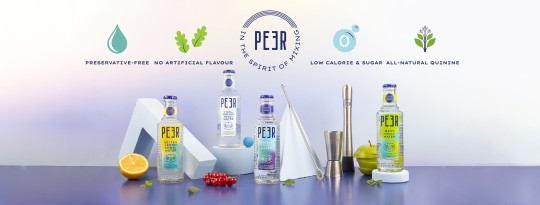
The story of the origin of tonic water is fascinating, as the drink was first created out of necessity rather than curiosity.
In the 19th century, British soldiers first made tonic water by mixing carbonated water and sugar with quinine (an essential medicine to treat malaria), to make it taste better. It, however, was still bitter, and they found another solution to this by adding gin. This is how tonic water was invented.
Over the years, there is a debate on the health properties of Indian tonic water. In this blog, we will discuss everything that you should know about tonic water: its benefits, side effects, nutritional value, how to buy tonic water, and much more.
Benefits of Tonic water
Talking about the benefits of Indian tonic water, there are several. Some of the benefits of tonic water are:
It is a cure for malaria
Tonic water acts as an Antipyretic
It helps in restless leg syndrome
It helps in weight loss
Side Effects of Tonic Water?
According to FDA (United States Food & Drug Administration), quinine is safe for consumption in a small dose – 83 parts per million in carbonated beverages.
The likelihood of a person experiencing any side effects from tonic water is slim. Yet, side effects include:
Vomiting
Nausea
Stomach cramps
Ringing in the years
Nervousness
Diarrhea
Confusion
The regular use of quinine can have severe side effects, these are:
Abnormal heartbeat
Kidney damage
Allergic reaction
Vision issues
Decreased blood platelets
Lung toxicity
The high amount of sugar and calories present in the tonic water can also be considered a side effect.
Who Should Avoid Tonic Water?
Following are the people who should avoid the intake of tonic water due to the presence of quinine in it:
Pregnant or breastfeeding women
People with abnormal heart rhythms
Patients with liver or kidney issues
Patients with low blood sugar
Patients taking any of these medications
Antidepressants
Antacids
Statins
Blood thinners
neuromuscular-blocking drugs
antibiotics
seizure medication
Where to Buy Best Tonic Water in India?
In recent years, the beverage industry has witnessed umpteen growth, and so has tonic water. Today, there are many brands that offer tonic water, PEER drinks being one of the best. The brand offers a wide range of tonic water variants at affordable prices. Visit their website to know more.
1 note
·
View note
Text
Shopping
Today is mid July and it is hot
Seeing as we are in the midst of a heatwave and getting melted by the hottest temperatures ever recorded by a thermometer not positioned in the center of Krakatoa I quite fancied some ice cold Indian Tonic Water with extra Quinine to fend off the Malaria cause I just love Tonic it is my fav but we have not had that in the shops for like totally fuckin months…

View On WordPress
0 notes
Text
Gin & Tonic The Right Choice
Back in Vogue with Gin Bloom. The alcoholic wonder is back in business and so is its associate the Indian Tonic. The renaissance is bringing back fond memories of regulars. The evening dose of G&T not only in India, but all over Europe where gin was invented.
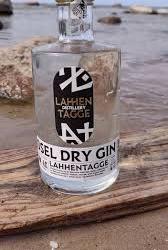
G&T With a Twist
There is a lovely twist to this eternal combination of the two. In contemporary era gin is more popular and is a handcrafted alcohol. Known as craft gin it is a fanciful recipe comprising of juniper extract and large number of choice botanicals that create a wonderful vibe. With so many ingredients to choose from the distillation has become an art depending much of the ingenuity of the blender.
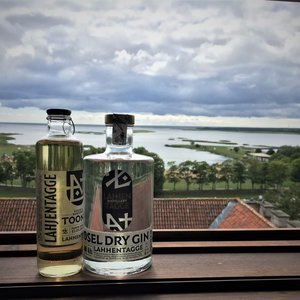
Gin bloom has ushered back the popularity of tonic which too has undergone a subtle change. Unlike the old version it has little of bitter quinine as malaria is no longer widespread prevalent. The reduction in bitter quinine is not the only change the carbonated sugared water has undergone there is change in the flavoring as well.
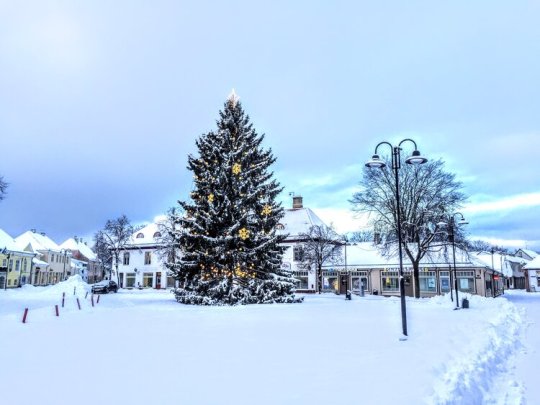
Lahhentagge Distillery based in Estonian Isle of Saaremaa flavors its tonic with spruce the old Christmas Tree the whole World knows about. Juniper also finds itself flavoring the tonic while the old faithful lemon still retains its position.

Just when you begin to look askance let me tell you that sharp bitter tangy flavor is still there only more palatable after having lost its purpose of warding of Malaria.
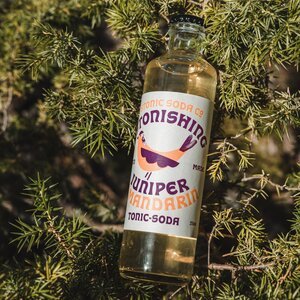
Try this tipple with a twist and you will seek more. Yes G&T is back not only in Estonia it is back all over Europe and APAC as well. The latter is slowly catching up with its own craft gin and tonic with exotic flavorings.
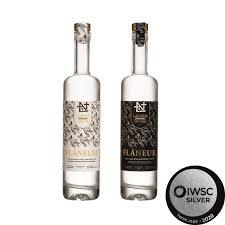
Wait! Things do not end here. If you are a teetotaler or abstaining for some reason there is a gin alternate. Yes one without alcohol but with wholesome taste of spirit. Flaneur and Flaneuse try them and you will revel with pleasure. Produced by Lahhentagge Distillery it is already winning awards and hearts as well. If you have the desire buy this non alcoholic gin from Estonia.
0 notes